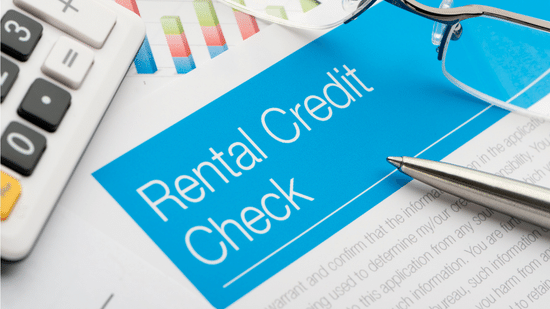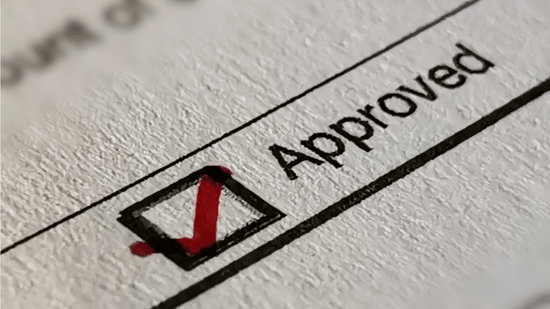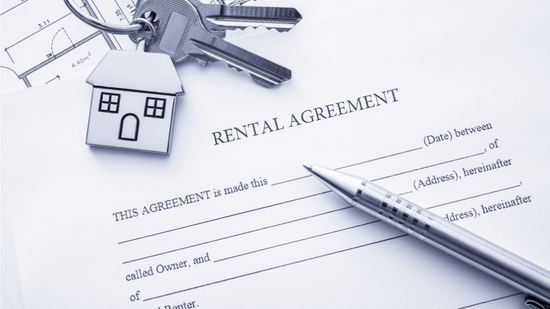
 |
 |
 |
 |
 |
The LPA Lease Agreement |
|
|
The Must-Have Rental Lease AgreementThe LPA Rental Lease Agreement is designed to fully interact with and support all of our Essential Landlord Forms for rental property management. The LPA Lease is State SpecificWe've customized The LPA Lease to conform to each state's requirements! Just select your state when downloading! You can also see your specific State Lease Index for detailed information. Experienced landlords love The LPA Lease agreement because it represents many years of trial and error learning from very painful and expensive experiences with tenants. This residential lease form has successfully saved us repeatedly from serious tenant nightmares, and from losing a lot of money! The LPA Lease Includes Our Newest Lease ClausesThe LPA Lease can be either Month to Month or Fixed Term.Easy to read and understand, The LPA Lease has evolved over the years and is highly praised by attorneys, landlords and even judges. Of course, we landlords like it the most because it was written especially to protect us. It does its job to discourage problem renters from signing on as our tenants. If the LPA Rental Application doesn't discourage the Deadbeat Tenant, the LPA Lease Agreement will. Let them disqualify themselves before they become your headache! We find that if a prospect passes our tenant screening requirements, he or she will agree to our lease agreement. Why not? The lease form outlines in detail what is expected of an excellent tenant. We only want excellent tenants for our rentals and they are more than happy to agree to reasonable terms in our rental agreement. They will treat the property with pride and respect, and that makes being a landlord a great job. The LPA Lease Agreement form is specially written to cater to residential houses and apartments. The LPA Lease has the right stuff!Already in word processor format for your convenience, you can easily add, delete or change items in the document to customize the lease form to your exact landlord needs. Downloadable in MS Word and also accessible for LPA members can also download your choice of Format of LPA Forms,   even if you don't have MS Word. even if you don't have MS Word.
Save Yourself Headaches with the LPA Lease AgreementIf possible, this lease should be read and explained to the tenant in person. We find it to be more effective that way. After all, it is an instruction manual for how to be your tenant in your rental property. Before turning over a valuable asset for a mere 1 or 2 month security deposit, make sure the tenants understand and agree to all your terms. You'd be surprised at how many people are so eager to just sign the lease without bothering to read it. You can get a real idea of what these people will be like as tenants by how they respond to the terms in your lease agreement. For example:
You really can learn a lot about a tenant during the lease signing. Remember, our lease is not meant to be used as a weapon, it is a Landlord Protection tool to defend yourself and your property from unscrupulous tenants and difficult situations. Although the LPA Lease is a very powerful tool, it's even more powerful when you use it effectively. Also available in letter size and alternate Part of the Essential Forms PackageThis form is a part of the Essential Forms package along with 100+ other forms. You can access all of our landlord forms with an LPA membership. LPA Landlords who use the LPA Lease Agreement also use:What is a Lease?A rental lease agreement is a contract a tenant and landlord use to outline their rights, duties and obligations when the tenant rents a residential and/or commercial property from the landlord, usually for a fixed period of time. Leases are governed by state law, and vary widely depending on what type of property is being leased and where it is located. The most common types of leases include:
Lease agreements typically contain provisions regarding rent payments, maintenance fees, insurance requirements, utilities, taxes, security deposits, parking spaces, and even pets. What is a Residential Lease Agreement?A Residential Lease Agreement is used to outline the terms and conditions of an apartment or house rental. This document covers everything from what happens when you move out of the property to how long you're allowed to live there. It includes information about the rent, deposit, security deposits, utilities, maintenance fees, pet policy, and much more. You can use a Residential Lease Agreement when leasing an apartment, house, condo, duplex, townhouse, or more. What Is the Difference Between a Lease & Rental Agreement?Both a lease and a rental agreement are legal documents that give the tenant the right to rent a piece of property. The term of a lease is usually for a longer period of time, in most instances 12 months. Rental agreement terms can vary, but the general use case is 30 days. However, it's not uncommon for a rental agreement to be several months or any period of time shorter than one year. This is not to say that lease agreement terms don't vary. While a lease is usually set for one year, some leases allow tenants to extend their stay up to three years. Lease Agreements by StateTypes of Lease AgreementsThe LPA Lease AgreementThe LPA Lease Agreement is packed with landlord protection and includes specific details for how to be a great tenant in your rental property. This state-specific agreement is specifically written to cater to residential houses and apartments and can be used for month-to-month or fixed-term tenancies. Apartment Lease AgreementThe apartment lease agreement covers specific clauses and situations that can arise when renting an apartment. It is also state specific so you can be sure you are following all required state laws. Lease with Purchase OptionA lease with purchase option includes the option for a tenant who is interested in purchasing the property during the term of the agreement. It structures payments that combine rent and payments to own the property. If the tenant decides to buy, the lease can then be converted to a purchase agreement. Commercial lease agreementCommercial lease agreements are used for any office, retail, or industrial spaces for businesses. We recommend the Commercial Net Lease Agreement to protect yourself. It's an adaptation of the LPA Lease designed to accommodate small businesses in commercial properties. This form offers a high level of landlord protection while being very direct and clear about the tenant's responsibilities. It also includes the choice for Triple Net. Rental AgreementThe rental agreement form works as a quick and easy lease signing. Although less detailed, it contains many of the same legal elements as the LPA Lease and is easily customizable. It is a residential lease that is state specific. Furnished Lease AgreementA furnished lease agreement includes an inventory checklist so that all items that are a part of the rental can be documented. This type of lease agreement works well for furnished apartments, condominiums, and residential homes. It's also a great option for seasonal and vacation rentals. Month-to-Month Rental AgreementThe month-to-month rental agreement works great for seasonal or vacation properties and is intended for tenants with shorter stay intentions. The Leasing Process
1. Pre-screen Potential Tenants
2. Potential Tenant Views the Space
3. Rental Application
4. Landlord Runs Credit & Background Check
5. Verify References
6. Approving the Tenant
7. Lease Signing
8. Taking Occupancy
9. End of the Lease
1. Pre-screen Potential TenantsWhen a prospective tenant contacts the landlord, several questions should be asked before setting up an appointment to view the rental. This ensures that the landlord isn't wasting their time with tenants who will not meet their standards. The following questions will help the landlord decide if they want to rent to this particular person.
2. Potential Tenant Views the SpaceBefore a lease is created, the potential tenant will view the space and see if they like it enough to rent it. They may make an offer or the lease may already have the rent price per month listed. 
3. Rental ApplicationThe landlord will provide the tenant with an application form. This is usually done online. The tenant fills out the information, uploads any required documents, and submit it. The tenant will also authorize a credit and background check and may be charged a small fee to cover the cost. 
4. Landlord Runs Credit & Background CheckA wise landlord will run a consumer report which will allow them to view the potential tenant's credit and background. Each state varies what the landlord is allowed to do or if they can take various aspects of a potential renter's history into account when making a rental decision. Recommended Services 
5. Verify ReferencesIf the tenant included professional and personal references on the rental application, the landlord should contact these individuals by phone and ask about their dealings with them. If speaking with a previous landlord, the prospective landlord should inquire if the tenant paid their rent on time. It's also important to verify the legitimacy of the referenced individuals are actually the person they claim to be. The Landlord Reference Check, a series of targeted questions, will help you weed out an imposter. 
6. Approving the TenantOnce a tenant is approved, a lease agreement should be written by the landlord with clear terms that the tenant understands. This is a vital step in ensuring a smooth lease term without any major issues. Some of the lease items may be negotiated, such as:

7. Lease SigningThe lease becomes legally binding for the term agreed upon once both parties sign the agreement. While many agreements today can be signed electronically, in-person signing is always an option. Tenant Obligations due at signing
Landlord Obligations due at signing

8. Taking OccupancyAfter the tenant signs the lease and completes all necessary obligations, they are granted access on the 1st day of the lease term. If the tenant needs to move in prior to the start of the lease agreement, a separate early occupancy addendum should be utilized that includes a pro-rata number of days and associated cost. 
9. End of the LeaseAt the end of the lease term, the tenant must return the keys to the landlord if the lease is not renewed. Either the landlord or the tenant can decide to not renew the lease. If the lease isn't renewed, the tenant is required to move out and provide their forwarding address. After the keys are returned, the landlord will inspect the property for any damages. Once inspected, the landlord must return the security deposit back to the tenant minus any deductions in accordance with state law and lease agreement details. Providing tenants with move-out instructions prior to their departure can ensure that all requirements are met so they can receive a full security deposit return. 
Security Deposit Terms by StateThe maximum amount of time for a landlord to return the security deposit to the tenant varies by state. You can see the entire list of security deposit return times vary by statelInclude State, Max Deposit Limits, Held in Separate Account, Refund Time, Law https://www.thelpa.com/free/security_return_by_state.pdf Rent Due & Grace PeriodsWhen rent is due and the tenant hasnít paid, a grace period protects the tenant from late fees or eviction. However, grace periods are different from state to state. Late rent can still negatively affect the tenantís rental history. Some states do not require a grace period while Massachusetts has the most lenient grace period (30 days). This information is current as of August 2022.
Late Fees (Maximum Allowed)Usually, a late fee is assessed when the tenant doesnít pay the rent on time. In many states, the late rent fee is not defined meaning the landlord can charge as much as described in the lease agreement. In other states, there are other defined guidelines.
Eviction LawsA landlord may begin the eviction process when payment of rent is not received and after delivering the correct forms. However, each state has different laws regarding when payment grace periods and when the eviction process can begin.
Landlord Access RulesEach state requires that reasonable notice should be given to the tenant before entry is made by the landlord. It can be hand delivered, posted or placed under their door, or mailed to them 6 days prior to the entry date. State Notice Period ChartFor # of Days to Cure Default with Pay Rent or Quit Notice This is the number of days the tenant has to pay before the landlord may file for eviction
Important Disclosures & Addendums Early Occupancy AddendumThe Early Occupancy addendum protects the landlord when the tenant moves in before the lease agreement starts. No Smoking AddendumThe No Smoking addendum emphasizes that smoking prohibited in the rental. It can also be used as a notice to inform tenants that they are in violation of the no smoking clause in the lease agreement. If the lease agreement the landlord enforces doesnít have a no smoking clause, this addendum will hold the tenant accountable to a no smoking policy. This clause is included in the LPA lease agreement. Furnished Unit AddendumThe furnished unit addendum entitles the landlord to inspections of the rental property using the inventory checklist to ensure that none of the included items, such as appliances or furniture have been lost or damaged during the current tenantís occupancy. The clause is included in the LPA lease agreement. Pet AddendumThe pet addendum contains key components of any lease that includes a pet. It includes a revocable privilege extended to the tenant in exchange for a promise and guarantee that the pet will be supervised responsibly. First Right of Refusal AddendumThe first right of refusal addendum gives the tenant peace of mind in knowing that the property will not be sold out from under them and that they will have the opportunity to purchase it first in case the property becomes available for sale. Appliance Addendum with Repair ClauseThere are two versions of the appliance addendum at the LPA. This one with the repair clause explains what the tenantís responsibilities are in regards to appliances and repairs. Rent Increase LetterThe rent increase letter informs the tenant about an upcoming rent increase, provided that the lease the landlord uses includes a provision for annual increases. The LPA Lease agreement includes this clause, but landlords can provide this rent increase letter to tenants as a reminder. Late Charges Due NoticeThe late charges due notice reminds the tenant that the rent was paid late and a late fee is still due. Past due penalties become added rent, which can put a tenantís lease in default standing. Security Deposit Return LetterWhen the tenant has complied with all obligations in their tenancy and they are refunded their entire security deposit, send this letter to them along with the security deposit refund receipt. Security Deposit Settlement Charges GuideTenants will appreciate knowing exactly what charges have been deducted from their security deposit. The itemized security deposit deduction letter helps landlords organize the list of charges and let tenants know what they are responsible for. Gain access to over 100 addendums, property management, and landlord forms through the LPA membership. Lease Agreement Terms GlossaryAccess - giving the tenant the ability to enter the rental property Landlord (lessor) - A landlord is a person who owns land, a house, or apartment and rents or leases the various properties to tenants. Security Deposit - A security deposit is an amount of money thatís intended to cover damages to the premises beyond normal wear and tear. The security deposit can be returned to the tenant if they abide by the terms of the lease and do not damage the property. Usually, a security deposit can be equal to one monthís rent or an amount in accordance with local laws. Periodic Tenancy - Periodic tenancy is the possession of a property that doesnít include a determined end date. While a fixed tenancy includes a fixed end per the terms of the lease, a periodic tenancy is determined by the tenant. Periodic tenancies are common with month-to-month rental agreements. Cosigner - A cosigner is a third-party person that doesnít live on the rental property, but is responsible for paying rent if the tenant doesnít pay it. Renters Insurance - Renters insurance protects the personal property of a tenant from unexpected circumstances such as fire, lightning, windstorm, plumbing system, theft, vandalism and so on. When acquiring renters insurance, be sure to know the specific coverages available through the policy. Sections of the Lease AgreementThe Parties, Tenant & Property
Rental Agreements Make Details ClearThe key to being a great landlord and having great tenants is clear terms and guidelines that are in the lease and understood by all parties. Landlords would be wise to ensure that all parts of the lease are understood by the tenants as they go through the lease signing process. Providing a way for tenants to reach them with any questions about the lease later on would be beneficial as well. Some states require a lease by law and there are laws regarding certain lease sections, such as maximum security deposit amounts that landlords must adhere to. Guidelines for the tenant that have proven to be helpful in a lease include: the start and end dates of the lease, security deposit amounts, stipulations and information regarding deductions from the security deposit, move-in and move-out guidelines, providing addendums to specific tenant situations, guidelines for rent increases, details regarding appliances, furnishings, and grounds or general maintenance responsibilities. FAQsA rent-to-own lease agreement is a lease that gives the tenant the option to purchase the property from the landlord before the rental term expires.
Yes. Renting a room is similar to renting a house. The lease agreement should outline the terms and responsibilities of the tenant while they are renting a portion of the house.
Renting or leasing without a lease agreement is not a wise decision. A lease serves as a legally binding agreement between two parties, landlord and tenant, and addresses the responsibilities and conflict resolution processes for each party during the term of the lease agreement.
At a basic level, the landlord is responsible for providing a habitable rental property, selecting the tenant(s), making repairs (unless otherwise stated in the lease agreement), and collecting rent from the tenant(s) and abiding by housing laws for all activities associated with the lease including evictions.
It would be wise to include the following items in a lease agreement: security deposit amount and how the tenant can get a full security deposit returned, and when the tenant will get it. Specific payment requirements including how to pay and when rent is considered late. Late rent fees, rent increase information, landlord access and notice requirements, rental agreement disclosures and any specific addendums that may be needed due to the tenantís situation.
Depending on the use case, a fully executed rental agreement can be used as a proof of address since it includes the address and is signed by the tenant and the landlord.
A lease is generally considered binding once signed. If you sign it, you must abide by the terms of the agreement. But there are ways to end a lease early without incurring penalties. Some leases offer a grace period where you can cancel up to seven days before the start date. This give you enough time to find another place to live. The details of any cancellation terms should be in the lease. Tenants can also consult local real estate laws.
If the landlord is in violation of the terms of the lease, the tenant is required to send a certified letter disclosing the specific violation. After a certain number of days pass, the tenant is allowed to terminate the lease. The tenant may also be entitled to damages from landlord negligence.
If the tenant is in violation of the lease, the landlord is required to give the tenant a notice to quit. This notification must state what the problem is and provide instructions on how to fix the matter. The tenant will have a certain number of days as described by state law. Failure to do this could lead the landlord to evict the tenant. In some states, tenants are given additional time to cure issues. However, there are limits to this extension. Some states limit the amount of time that landlords can extend the notice to quit to one hundred twenty (120) days. Some states require landlords to give tenants thirty (30) days written notice prior to terminating the lease. Others allow for sixty (60) days written notice. In most standard lease agreements, tenants are prohibited from subletting. This means they cannot rent out the property without permission. However, there are exceptions. For example, landlords usually allow tenants to sublease the property if it is vacant, and if the tenant pays the full amount of rent due under the original lease agreement. Landlords do not typically want to lose money because of a tenantís inability to pay rent.
If the tenant would like to make use of the property, he or she must obtain written consent from the landlord, and the landlord has every right to refuse the request. Some states even require landlords to approve subleases. A few states, such as California, New York, and Texas, even require landlords to give tenants notice about their right to sublease. Local laws vary, but in many areas, there are specific requirements on what you can and cannot include in a lease agreement. For example, some states prohibit discrimination against people because of their race, national origin, religion, sex, or sexual orientation. Others restrict how much information you can request about applicants. In addition, some states require landlords to disclose the financial institution that holds tenants' deposits.
If you're thinking about including anything in your Lease Agreement that could potentially violate local law, it's best to consult legal counsel. They can help ensure that your contract complies with local regulations. A landlord-tenant lawyer usually costs anywhere between $200 and 500 dollars per hour depending on where you live. But there are ways around paying high hourly rates while still getting a lease that will protect you and your property. One way is to use a service like The LPA. We offer 100+ lease agreements, addendums, rent collection, and property management forms for landlords that will protect your investment and give you peace of mind.
The signed lease should be stored in a safe place. Additionally, an executed copy of the lease should be given to all tenants named in the lease. The landlord should have the lease readily available should any issues arise during the lease term.
|
  
|
||||||||||||||||||||||||||||||||||||||||||||||||||||||||||||||||||||||||||||||||||||||||||||||||||||||||||||||||||||||||||||||||||||||||||||||||||||||||||||||||||||||||||||||||||||||||||||||||||||||||||||||||||||||||||||||||||||||||||||||||||||||||||||||||||||||||||||||||||||||||||||||||||||||||||||||||||||||||||||||||||||||||||||||||||||||||||||||||||||||||||||||||||||||||||||||||||||||||||||||||||||||||||||||||
© 2000-2024 The Landlord Protection Agency, Inc.